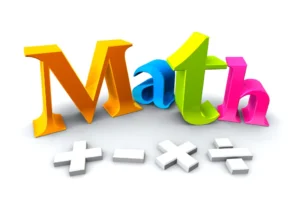Table of Contents

As the Tutorial Focus, mastering this mathematical aspect becomes pivotal in enhancing problem-solving abilities and ensuring confidence during the JAMB examination.
Hi guys. Today we’ll be looking to completely exhaust sequences and series based on jamb mathematics syllabus.
If you feel you need a good textbook instead, see the recommended textbook jamb asked students to read for mathematics.
However, for those who feel they have completely exhausted this topic, click here to see tough questions on sequences and series
Having said all that, let’s proceed.
For the best guide in your studies and mathematics tutorials with videos, visit ogschools.com
1.1 Sequences and series
A set of numbers such as �1,�2,�3,�4,…,�� which are ordered is called a sequence. �1 is the first term, �2 is the second term, �� is the ��ℎ term of the sequence. The following are examples of sequences
1. 1,3,5,7,…,2�−1 (sequence of odd numbers)
2. 2,3,6,8,10,…,2� (sequence of even numbers)
The expression �1+�2+�3+�4+…+�� which can be formed from a sequence is called a series.
1.2 Arithmetic progression (A.P)
An arithmetic progression of A.P is a series of the form: �+(�+�)+(�+2�)+(�+3�)+… where a is the first term and d is called the common difference which may be positive or negative. Each bracket of the A.P is a term and simple progression will give the ��ℎ term of the sequence.
��=�+(�−1)�
If there are n terms in the A.P and �� is their sum, then
��=[�]+[�+�]+[�+2�]+…+[�+(�−1)�]
Reversing the series gives
��=[�+(�−1)�]+[�+(�−2)�]+[�+(�−3)�]+…+[�]
Adding both equations of ��gives
2��=[2�+(�−1)�]+[2�+(�−1)�]+[2�+(�−1)�]+…+[2�+(�−1)�]2��=�[2�+(�−1)�]��=�2[2�+(�−1)�]{Sum of n terms of a sequence}
first term =�,��= last term =�+(�−1)�∴��=�2[�1+��] {Sum of n terms of a sequence}
1.3 Arithmetic mean
If �,�,� are three consecutive terms of an A.P, then q is called the arithmetic mean of p and r. Since �,�,� are consecutive terms of an A.P, it implies that
�−�=�−�=��−�=�−�2�=�+��=�+�2
The arithmetic mean of two numbers is the average of the two numbers.
Example 1
a. Find the 15�ℎ term and the sum of the first 26 terms of the series 21,17,13,9,5,…
b. Calculate the arithmetic mean of -15 and -23
Solution
Given 21,17,13,9,5,…�=21,�=17−21=−4,�=15,�15=?,�26=?
a. i. ��=�+(�−1)��15=21+(15−1)(−4)�15=21+(14)(−4)�15=21−56�15=−35
ii. ��=�2[2�+(�−1)�]�26=262[2(21)+(26−1)(−4)]�26=13[42+(25)(−4)]�26=13[42−100]�26=13[−58]�26=−754
alternatively,
�26=21+25(−4)�26=21−100�26=−79��=�2[�1+��]�26=262[21+(−79)]�26=13[−58]�26=−754
b. arithmetic mean =−15+(−23)2=−19
1.4 Geometric progression (G.P)
A series that is in the form �+��+��2+��3+… is called a geometric progression, where a is the first term and r is the common ratio. The �(�ℎ) term is ��=���−1.
Let �� be the sum of the ��ℎ terms of a series
��=�+��+��2+��3+…+���−1
multiply through by r
���=��+��2+��3+…+���−1+���
subtracting $rS_{n}$ from $S_{n}[/latex] gives
(1−�)�−�=�−�����=�(1−��)1−� (first equation)
subtracting �� from ��� gives
(�−1)��=���−���=�(��−1)�−1 (second equation)
Both equations can be used to solve for ��
1.5 Geometric mean
If the number �,�,� are three consecutive terms of a G.P, then b is called the geometric mean of a and c. Since �,�,� are consecutive terms of a G.P,
��=��=��2=���=��
The value of b could either be +ve or -ve but never both. The common ratio determines it.
Example 2
a. Find the sum of the first 8 terms of the series 127,19,13,…
b. If the 7�ℎ and 10�ℎ terms of a G.P are 320 and 2560 respectively, find the series
Solution
a. Given 127,19,13,…�=127,�=19÷127=3,�=8��=�(1−��)1−��8=127(1−38)1−3=−656027×−2�8=−6560−54�8=121.48
alternatively,
��=�(��−1)�−1�8=127(38−1)3−1=656027×2�8=656054�8=121.48
It’s obvious that both equations can work
b. 7�ℎ term =��7−1=��6��6=320
Similarly, 10�ℎ term =��9��9=2560��9��6=2560320�3=8�=83�=2��6=320�(2)6=320�=32064�=5
Remember a geometric series is represented as �,��,��2,��3,…∴ the G.P is 5,10,20,40
1.6 Sum to infinity of a G.P
�∞=�1−�
Where /�/<1 i.e the magnitude of r whether positive or negative is always less than 1.
∴ ranges from -1 to + 1 i.e −1<�<1 but �≠0
Thanks for taking out time to read this article. If there’s any area you feel was not touched, needs correction or needs clarification, do well to use the comment section below.
Please do well to share and leave your comments below as this will go a long way to encourage me and put a smile on my face. Do have a nice day.
ALSO READ:
Top 10 Websites for Learning Mathematics
Best Math Textbooks for Nigerian Schools (2023/2024)
JAMB Subject Pairing for Computer Science with Mathematics
The 10 Toughest Mathematical Concepts: A Closer Examination
Prerequisites for Pursuing Mathematics at UNICAL
Leave a Reply